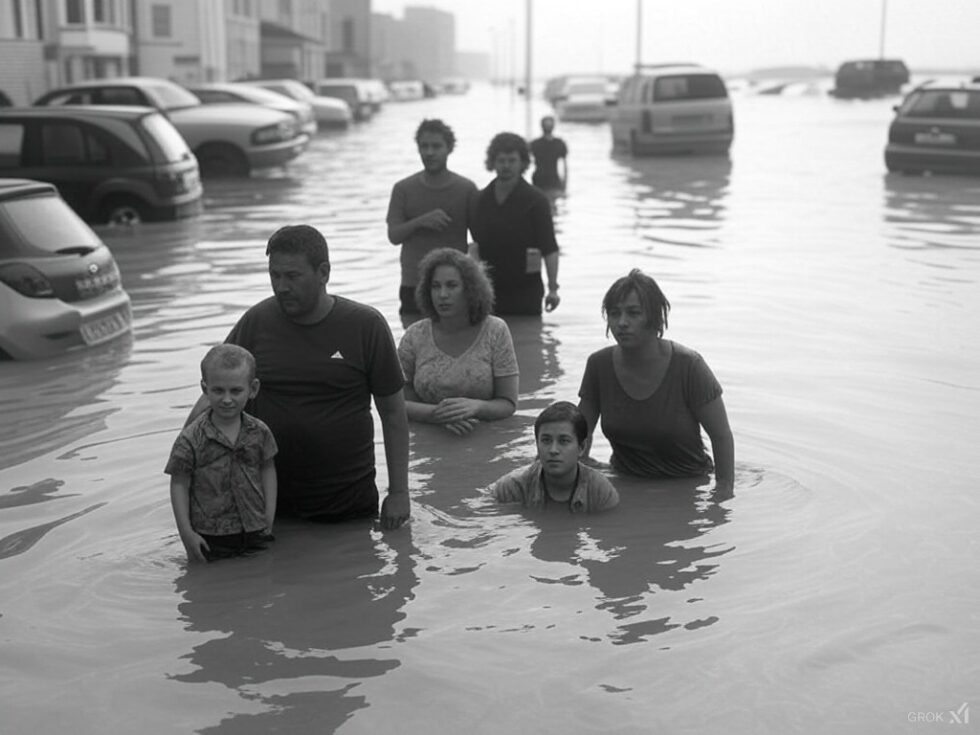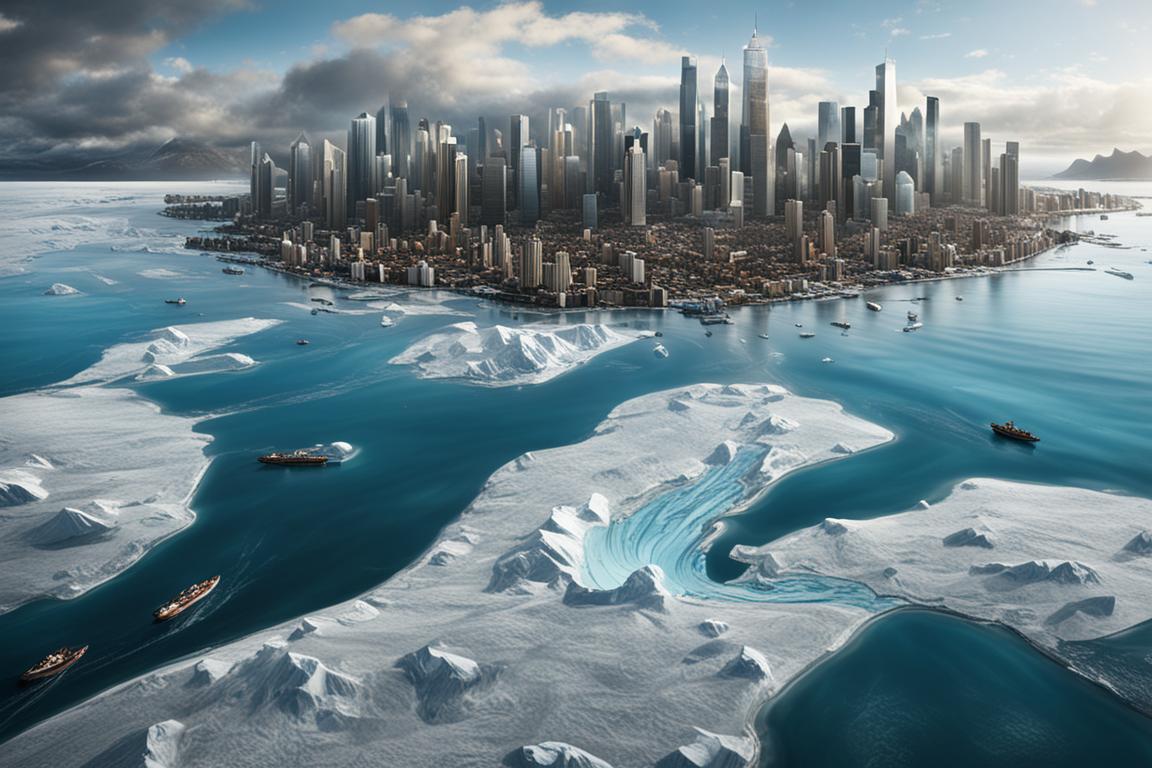
In the year 2073, the world had transformed into a place where the ocean’s whispers were no longer gentle lullabies but roaring threats. The global temperature had risen by an average of 2 degrees Celsius since the early 21st century, sparking a cascade of environmental changes that reshaped the planet’s geography and the lives of its inhabitants. Coastal cities, once bustling hubs of commerce and culture, now stood at the forefront of humanity’s struggle against nature’s relentless advance.
The first signs of trouble appeared in the early 2050s. In Miami, a city renowned for its vibrant nightlife and pristine beaches, residents initially dismissed unusually high tides as a temporary anomaly. However, as the waters continued to rise, swallowing streets and seeping into homes, the reality became undeniable: the sea was reclaiming its territory. Miami’s famed Art Deco district, with its pastel-colored buildings, became a haunting reminder of what once was, as saltwater corroded the foundations and vibrant murals faded under the relentless assault of the elements.
By 2060, the situation had escalated dramatically. The United Nations convened an emergency summit, bringing together scientists, politicians, and activists from around the globe. The agenda was clear: find a way to protect the world’s coastal cities from the encroaching seas. This summit gave birth to the Global Coastal Defense Initiative (GCDI), a massive international effort to construct barriers, levees, and artificial islands designed to hold back the tides. Yet, as ambitious as the project was, it could not keep pace with the accelerating rise of the oceans.
In the heart of New York City, the iconic skyline was mirrored in the waters that now lapped at the steps of the Financial District. The Statue of Liberty, once a symbol of hope and freedom, stood as a solitary sentinel in the harbor, surrounded by the encroaching sea. The city’s inhabitants, resilient as ever, adapted to their new reality. Water taxis became the primary mode of transportation, and skyscrapers were retrofitted with floating foundations, transforming them into modern-day arks.

Yet, for every city that managed to adapt, countless others could not. In Bangladesh, millions were displaced as the Bay of Bengal swallowed entire villages, forcing families to flee inland in search of refuge. The global refugee crisis reached unprecedented levels, straining resources and igniting tensions between nations. Borders became battlegrounds, not just for land, but for the very survival of cultures and communities.
Amidst the chaos, a new movement emerged, led by a coalition of scientists and visionaries who believed that the key to humanity’s survival lay not in fighting the sea, but in embracing it. They called themselves the Ocean Pioneers, and their vision was radical: to build floating cities that would rise and fall with the tides, creating a new way of life in harmony with the planet’s changing climate.
The first of these floating cities, Oceanus, was launched in 2075 off the coast of what was once California. Constructed from sustainable materials and powered by renewable energy, Oceanus was a marvel of engineering and a beacon of hope. Its inhabitants, a diverse mix of former coastal dwellers, scientists, and adventurers, forged a new society that thrived on cooperation and innovation.
As the years passed, more floating cities joined Oceanus, forming a network of maritime communities that dotted the globe. The Ocean Pioneers’ vision had become a reality, offering a glimpse of a future where humanity and nature could coexist in balance. The floating cities became centers of research and development, pioneering new technologies to combat climate change and restore the planet’s ecosystems.
By the turn of the 22nd century, the world had transformed. The coastal cities of old, now submerged relics, served as poignant reminders of the past. Yet, from their watery graves, a new civilization had emerged, one that had learned to adapt and evolve in the face of adversity. The floating cities, with their vibrant cultures and thriving ecosystems, stood as testaments to the resilience and ingenuity of the human spirit.
In this new world, the ocean was no longer an adversary but a partner in humanity’s journey. The lessons of the past had been hard-won, but they paved the way for a future where the tides of change were no longer feared but embraced. The story of the rising seas had become a story of hope, transformation, and a new beginning for the human race.




